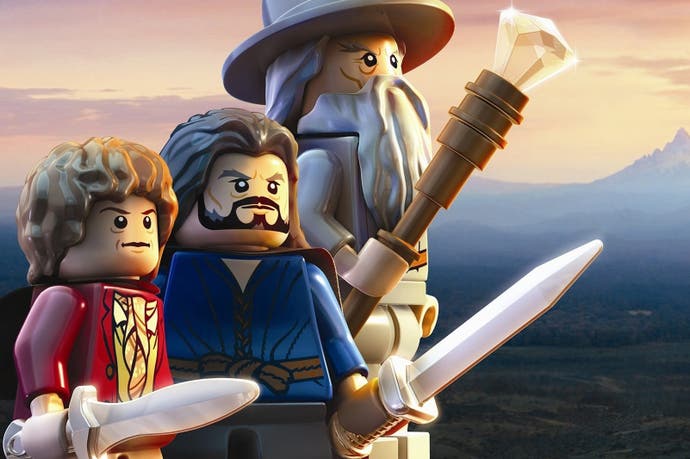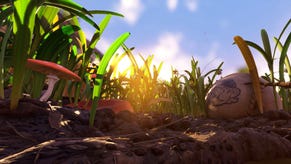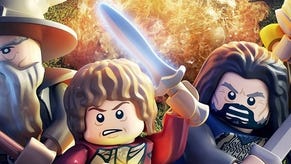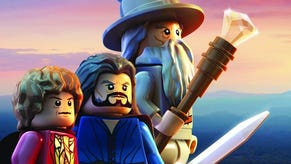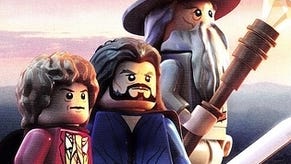Games of 2014: Lego The Hobbit
Precioussssss.
My love of Lego as a child has stuck with me ever since. I used to play with it a lot. My younger self would hungrily build sets received at birthdays and Christmas, then quickly repurpose their parts for far grander designs: studded brick landscapes that stretched from living room wall to kitchen door.
TT Games' Lego franchise has never had the same scope for creativity as the original toy - and for that there's now Minecraft - but the series is starting to match the imagination of Lego fans via the complex worlds it now offers up for exploration. And amongst 2014's games, Lego: The Hobbit's version of Middle Earth was a guilty pleasure of a world that I kept going back to.
Let's be clear - if you are tired of the Lego franchise's formulaic approach to individual level design then it is unlikely that Hobbit (or any other recent entry in the series) is about to win you back. The criticisms levelled at it in Eurogamer's review are fair and, perhaps, overdue. There's much that TT Games could work on and improve. But the series is changing - to the point where the game's scripted story missions are now just a small part of the full experience on offer.
The game's highlight is your ability to explore the entirety of The Hobbit's Middle Earth at whim - that fantastic, iconic map I remember poring over in a paperback years ago. From the polished floors of Bag End to the shining treasure hoard hidden under The Lonely Mountain, The Hobbit lets you roam far and wide. Through dense forests and over blizzard-topped mountains, down into hidden caves and secret-filled glens, the game's world is a beautiful, detailed and slightly cheeky love letter to Peter Jackon's films and Tolkien lore in general.
Want to go hang out with Tom Bombadil on a farm in a remote corner of the Shire? You can do that. Want to play as Jackson himself via his carrot-chomping cameo? You can do that too. There's even a few digs at nice-but-dim Orlando Bloom. In terms of locations themselves, the game's sprawling versions of Rivendell and Hobbiton are stand-out highlights, while players will keep coming back to the moody, always-raining town of Bree as their base for upgrades and other operations.
Lego The Hobbit (and Lord of the Rings, to a lesser degree) deserve credit for bringing a number of new systems to the series for the first time - chains of side-quests, crafting, resource-farming and a huge inventory of items to play around with. These are not new ideas, but have been a long time coming. Look back at the Lego series' origins and you'll see titles made up of story-centric levels and very little else - the ageing Lego Star Wars and Indiana Jones entries, for example, which used their off-mission locations as little more than menus.
Years later, TT Games only really flexed its muscles when it came to make its Lego Harry Potter games, and built a miniature version of Hogwarts for players to explore. Lego Batman 2, Lego Marvel Super Heroes and the Wii U-exclusive Lego City Undercover then built on that increased scope, growing their worlds to encompass full cities. Lord of the Rings pushed this further still, although was somewhat sparsely populated.
For many Middle-Earth fans, these games could be the best way to wander Tolkein's world at their own pace (Shadow of Mordor is great, but its map hardly allows for anything resembling a proper tour). You'll probe puzzles in the swamps of Mirkwood for hidden characters and uncover mini-games hidden among the Misty Mountains that reward valuable mithril blocks and blacksmith blueprints. Hobbit deepens the rudimentary crafting system introduced in Lord of the Rings, adding numerous materials that randomly spawn and can be collected, mined and smelted into new or better tools.
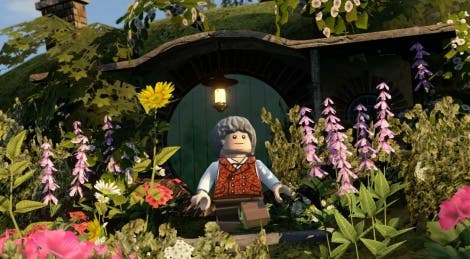
Middle Earth is now big enough that you need one of the game's customisable mounts to traverse it at a decent pace - horses, ponies, wargs and trolls are on offer. Or you can call in one of those handy deus ex machina eagles to swoop down and fast-transport you somewhere else (if only the same option was available in cinemas during the Desolation of Smaug).
You could even argue that the game tells the story of the Hobbit in a better fashion than the two films it encompasses, capturing the performance and voices of its characters well within their plastic limitations, while gently poking fun at some of the more ridiculous moments. There's little time to be spent on egregious inter-species love triangles and dull Dwarf songs, while the game wisely allows players to linger longer than Jackson's cameras among more interesting locales such as Dol Gudur and Dale.
Warner Bros.' decision to launch the game before the full Hobbit film trilogy was complete is perhaps the only real disappointment, and it leaves the inevitable expansion to add the trilogy's final third fighting a feeling of a cash-grab before it has even been officially confirmed. That said, there's no word yet on what else the DLC might add, and as for the base game itself? It's hardly lacking. Completing The Hobbit to 100 per cent will take just as long any other Lego adventure, and arguably has the best gameplay balance in the series to date. The addition of so much open-world exploration means that finishing the game properly is a far more varied experience - no longer is it just as case of replaying the same levels over and over in their entirety until the percentage gauge ticks to three figures.
Lego The Hobbit is worth remembering among 2014's games. It's arguably the best entry yet in TT Games reliably great series, one that will hopefully be a turning point in the developer's continuous release schedule, where the series really pushed its formula forward. And, for me, it is a chance to remember the afternoons years ago when my living room acted as a canvass for my imagination.
